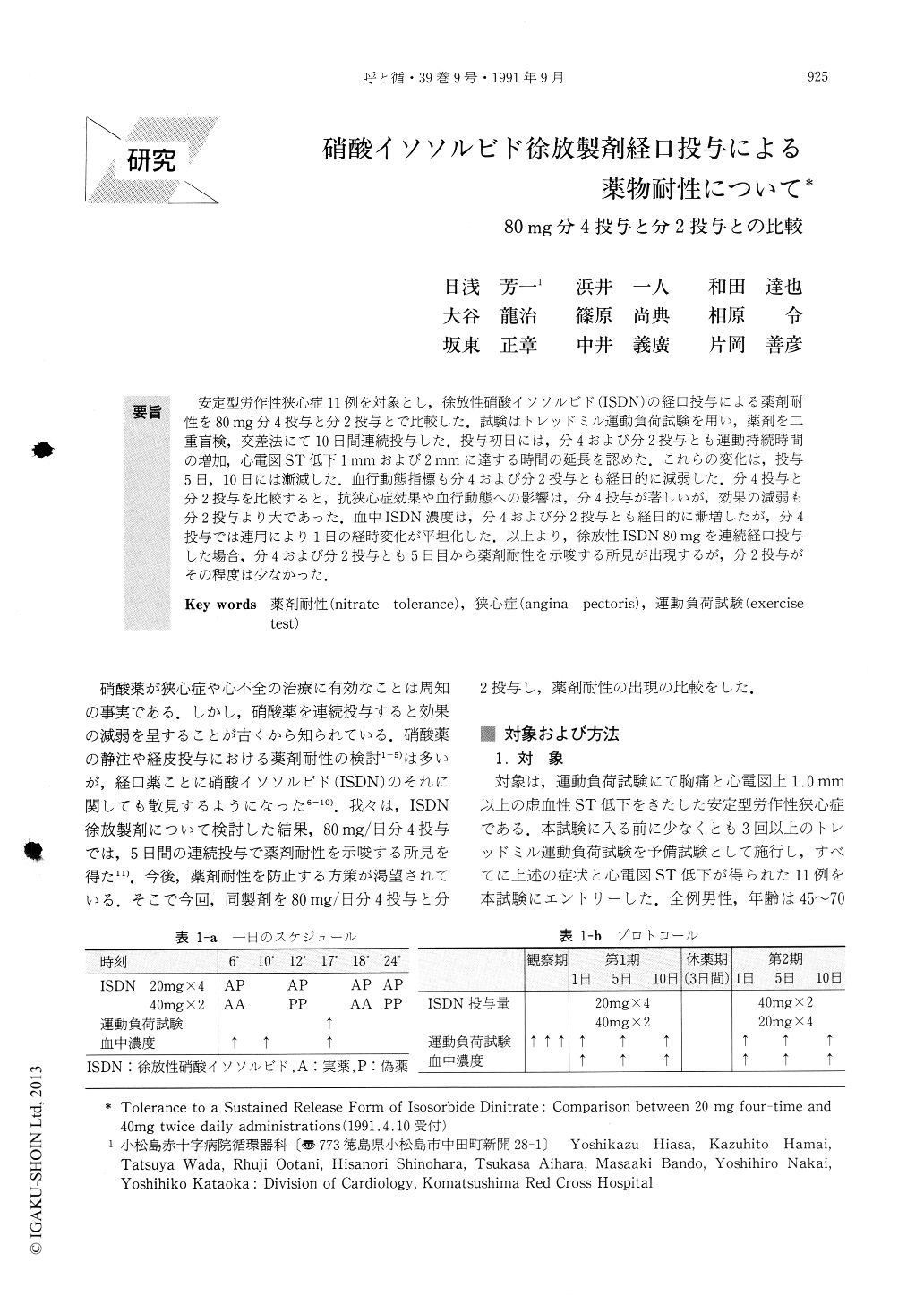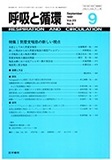Japanese
English
- 有料閲覧
- Abstract 文献概要
- 1ページ目 Look Inside
安定型労作性狭心症11例を対象とし,徐放性硝酸イソソルビド(ISDN)の経口投与による薬剤耐性を80mg分4投与と分2投与とで比較した.試験はトレッドミル運動負荷試験を用い,薬剤を二重盲検,交差法にて10日間連続投与した.投与初日には,分4および分2投与とも運動持続時間の増加,心電図ST低下1mmおよび2mmに達する時間の延長を認めた.これらの変化は,投与5日,10日には漸減した.血行動態指標も分4および分2投与とも経日的に減弱した.分4投与と分2投与を比較すると,抗狭心症効果や血行動態への影響は,分4投与が著しいが,効果の減弱も分2投与より大であった.血中ISDN濃度は,分4および分2投与とも経日的に漸増したが,分4投与では連用により1日の経時変化が平坦化した.以上より,徐放性ISDN 80 mgを連続経口投与した場合,分4および分2投与とも5日目から薬剤耐性を示唆する所見が出現するが,分2投与がその程度は少なかった.
Attenuation of antianginal effects of oral isosorbide dinitrate in a sustained release from (ISDN-SR) were studied using the treadmill exercise test in eleven patients with stable exertional angina and a positive exercise test. We compared the four-time-daily admin-istration of 20 mg with a twice-daily regimen of 40 mg for 10 days using the double-blind, crossover method. On the 1st day of the administration, with both regi-mens, the treadmill walking time, the time to 1mm and 2mm ST depression, and several hemodynamic parame-ters increased significantly.

Copyright © 1991, Igaku-Shoin Ltd. All rights reserved.


